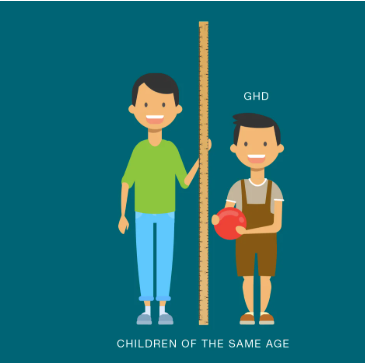Growth retardation is defined as a condition in which the rate of physical growth (height, weight, or overall development) is slower than the normal standard for age and sex.
- In children, it means failure to achieve expected growth compared to growth charts.
- In fetuses (intrauterine growth retardation, IUGR), it refers to poor growth while in the womb.
- More broadly, it describes delayed or stunted growth due to genetic, nutritional, hormonal, environmental, or disease-related factors.

The causes of growth retardation:
1. Prenatal (before birth) causes
- Maternal factors: malnutrition, smoking, alcohol, drug use, chronic illness (e.g., hypertension, diabetes).
- Placental factors: placental insufficiency, abnormalities of umbilical cord or blood flow.
- Fetal factors: chromosomal abnormalities (e.g., Down syndrome, Turner syndrome), congenital infections (TORCH: toxoplasmosis, rubella, cytomegalovirus, herpes, syphilis).
2. Postnatal causes
- Nutritional deficiencies: protein-energy malnutrition, vitamin/mineral deficiencies.
- Chronic systemic diseases: congenital heart disease, chronic kidney disease, gastrointestinal disorders (celiac disease, inflammatory bowel disease, cystic fibrosis).
- Endocrine disorders:
- Growth hormone deficiency
- Hypothyroidism
- Cushing’s syndrome (excess cortisol)
- Poorly controlled diabetes
- Genetic/syndromic causes: Turner syndrome, Noonan syndrome, Prader-Willi syndrome, achondroplasia.
- Skeletal abnormalities: rickets, osteogenesis imperfecta.
3. Environmental & psychosocial causes
- Severe neglect, abuse, or lack of emotional nurturing (psychosocial dwarfism).
- Chronic exposure to toxins (e.g., lead, alcohol).
- Poverty and food insecurity.
4. Idiopathic
- Sometimes, no clear cause is found → termed idiopathic short stature or constitutional growth delay (children who grow more slowly but eventually reach normal height after delayed puberty).

The symptoms of growth retardation
General symptoms
- Short stature – height significantly below average for age/sex (often below the 3rd percentile).
- Low weight (if nutritional or systemic disease is present).
- Failure to thrive – poor weight gain and growth in infants/young children.
- Delayed puberty – late onset of secondary sexual characteristics.
- Disproportionate body size (if skeletal dysplasia or rickets).
Additional symptoms depending on cause
- Endocrine causes
- Hypothyroidism → fatigue, constipation, dry skin, puffiness, delayed milestones.
- Growth hormone deficiency → increased fat around waist, short stature, normal body proportions.
- Cushing’s syndrome → round face, obesity, thin limbs, purple stretch marks.
- Nutritional deficiency
- Thin hair, brittle nails, anemia, irritability, muscle wasting.
- Genetic/syndromic
- Dysmorphic features (e.g., wide-spaced eyes, webbed neck in Turner syndrome).
- Developmental delay or intellectual disability (in some syndromes).
- Chronic diseases
- Recurrent infections, fatigue, poor appetite, abdominal pain (e.g., celiac disease, kidney disease, congenital heart disease).
The treatment of growth retardation:
1. Nutritional management
- Balanced diet rich in protein, vitamins, and minerals.
- Treatment of malnutrition with supplements (iron, zinc, vitamin D, calcium, etc.).
- Nutritionist-guided feeding plans for children with poor intake.
2. Treatment of underlying diseases
- Chronic illnesses (kidney disease, heart disease, celiac disease, inflammatory bowel disease): manage the primary disorder.
- Infections: treat appropriately (e.g., antibiotics, antivirals).
- Endocrine disorders:
- Growth hormone deficiency → recombinant growth hormone injections.
- Hypothyroidism → thyroxine replacement therapy.
- Cushing’s syndrome → treatment of cortisol excess (surgery/medications).
3. Hormone therapy
- Growth hormone therapy → for children with GH deficiency, Turner syndrome, chronic renal insufficiency, Prader-Willi syndrome, and some cases of idiopathic short stature.
4. Psychosocial interventions
- Ensure a healthy, nurturing environment.
- Address neglect or abuse if present.
- Counseling and family support.
5. Genetic/Syndromic causes
- No cure for genetic syndromes, but supportive therapies (hormone treatment, physiotherapy, special education) can improve growth and development.
6. Monitoring
- Regular tracking of growth on standardized growth charts.
- Monitoring puberty, bone age (via X-ray), and nutritional status.
